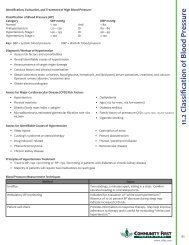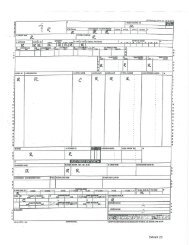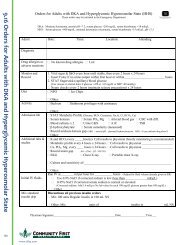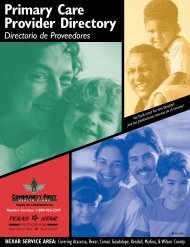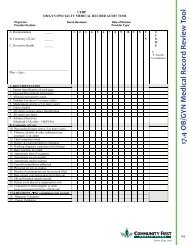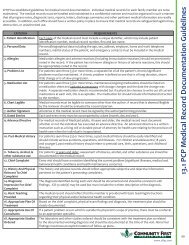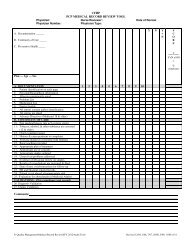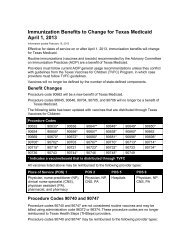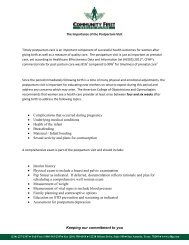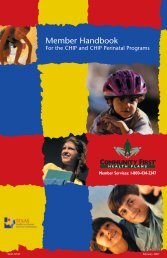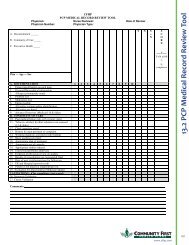Full Clinical Guidelines - Community First Health Plans.
Full Clinical Guidelines - Community First Health Plans.
Full Clinical Guidelines - Community First Health Plans.
Create successful ePaper yourself
Turn your PDF publications into a flip-book with our unique Google optimized e-Paper software.
18.1 RSV Prophylaxis<br />
RESPIRATORY SYNCYTIAL VIRUS (RSV) PROPHYLAXIS GUIDELINES<br />
Respiratory syncytial virus (RSV) is a virus that causes serious respiratory illness in preterm infants, especially those who<br />
develop perinatal respiratory problems. RSV prophylaxis drugs palivizumab (immune globulin intramuscular) (RSV-IgIM)) and<br />
(immune globulin intravenous (RSV-IGIV) are covered benefits which require authorization for <strong>Community</strong> <strong>First</strong> eligible children<br />
including members enrolled in HMO, Medicaid and CHIP plans. The immunity imparted by these immune globulins is effective<br />
for approximately 28 days.<br />
Palivizumab RSV immune globulin for intramuscular use (RSV-IgM or Synagis) and RSV immune globulin for intravenous use<br />
(RSV-IGIV or Respigam) are appropriate for at-risk children age 0 through 34 months of age according to the AAP guidelines<br />
below.<br />
The dose of palivizumab is 15 mg/kg and is supplied in 50 or 100 mg vials and is administered intramuscularly. RSV-IGIV is<br />
administered intravenously at a dosage of 750 mg/kg (15mL/Kg). RSV prophylaxis should be given monthly starting at the<br />
beginning of the RSV season and stopping at the end of the season (October through April in Texas). Once a child qualifies for<br />
initiation of prophylaxis at the start of the RSV season, administration should continue throughout the season regardless of the<br />
point where a child reaches 6 or 12 months of age. Hospitalized infants determined to be at risk of severe RSV disease should<br />
receive RSV-IGIV or palivizumab 48 to 72 hours before discharge home from the hospital during the RSV season and then every<br />
28-30 days until the end of the season.<br />
AMERICAN ACADEMY OF PEDIATRICS GUIDELINES:<br />
• Infants born at 28 weeks gestation or earlier during RSV season, whenever that occurs during the first 12 months of life<br />
• Infants born at 29–32 weeks gestation if they are younger than 6 months of age at the start of the RSV season<br />
• Infants born at 32–35 weeks gestation who are younger than 3 months of age at the start of the RSV season or who are<br />
born during RSV season if they have at least one of the following 2 risk factors: 1) infant attends child care; 2) infant has a<br />
sibling younger than 5 years of age<br />
• Infants and children younger than 2 years with cyanotic or complicated congenital heart disease<br />
• Infants and children younger than 2 years who have been treated for chronic lung disease within 6 months of the start of<br />
the RSV season.<br />
• Infants born before 35 weeks of gestation who have either congenital abnormalities of the airway or neuromuscular<br />
disease that compromises handling of respiratory secretions<br />
NOTE: Palivizumab does not interfere with routine childhood vaccine administration. See AAP guidelines for specific<br />
exceptions to vaccine administration when RSV-IGIV is used.<br />
152 H EALTH PLANS<br />
www.cfhp.com



